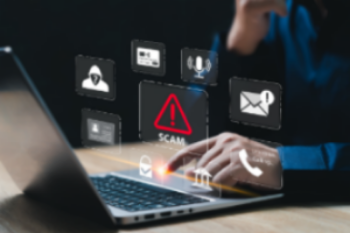
PROTECTING YOUR ONLINE SECURITY
In today’s digital world, safeguarding your personal information is more important than ever. This page provides essential tips and strategies to enhance your online security, helping you to recognize and avoid common fraud and scams. Whether you’re shopping, banking, or browsing online, being informed about potential threats will empower you to protect your data and keep your transactions secure. Stay one step ahead by learning how to identify risks and take action to protect yourself in the ever-evolving landscape of cybercrime.
.png)
Clearing your browser's cache and cookies has several benefits for
both your privacy and browser performance.
Click the link below for a breakdown of the key advantages.
By regularly clearing your cache and cookies, you can maintain a balance of
good browser performance, privacy, and security.
HOW TO CLEAR CACHE AND COOKIES ON SAFARI FOR IPHONE AND IPAD HOW TO CLEAR CACHE AND COOKIES ON SAFARI FOR MAC
Additionally, below is an article from the Federal Trade Commission on how websites
and apps collect and use your information.

Click the link below for some web
browsing tips to keep
your information safe.
 Are Public Wi-Fi Networks Safe?
Are Public Wi-Fi Networks Safe?
Below is an article from the Federal Trade Commission
regarding public Wi-Fi networks and how to
keep your personal information safe when online.
Securing your home Wi-Fi Network
is just as important.
Below is an article from the Federal Trade
Commission on how to keep your home
Wi-Fi Network secure.
 IS YOUR PASSWORD STRONG ENOUGH?
IS YOUR PASSWORD STRONG ENOUGH?
Here is an article from the Federal Trade Commission on the importance of
creating strong passwords and other ways to protect your accounts.
What is Malware and how can you protect yourself against it?
Malware (short for malicious software) is any software specifically designed to disrupt, damage, or gain unauthorized access to computer systems, networks, or devices. Its goal is typically harmful and can range from stealing sensitive information, such as passwords or credit card numbers, to spying on user activities, corrupting files, or even hijacking an entire system for illegal purposes.
There are several types of malware, each with different functions:
- Viruses: These attach themselves to legitimate programs or files and spread when those files are shared. They can corrupt or delete data and cause system malfunctions.
- Worms: Unlike viruses, worms don't need to attach to files. They replicate themselves across networks, often causing widespread damage.
- Trojans: Disguised as legitimate software, trojans trick users into downloading and installing them. Once inside a system, they can steal data or provide backdoor access to hackers.
- Ransomware: This type of malware locks or encrypts a user's files and demands payment (a ransom) to restore access.
- Spyware: It secretly monitors user activity, often to collect personal information, such as browsing habits, passwords, or credit card information.
- Adware: It bombards users with unwanted advertisements and can often track user data without permission.
- Rootkits: These allow cybercriminals to gain control over a system, often without being detected, giving them access to sensitive data or enabling them to alter system settings.
- Bots: These can automate tasks on infected devices, often turning them into "botnets" for large-scale attacks, such as DDoS (Distributed Denial of Service) attacks.
Malware typically spreads through methods like phishing emails, malicious websites,
infected software downloads, or vulnerabilities in unpatched software.
 What is Phishing?
What is Phishing?
Phishing is a type of cyberattack where attackers impersonate legitimate organizations or individuals to trick people into revealing sensitive information, such as usernames, passwords, credit card numbers, or other personal details. This is typically done through deceptive emails, messages, or websites designed to look like official, trusted sources.

